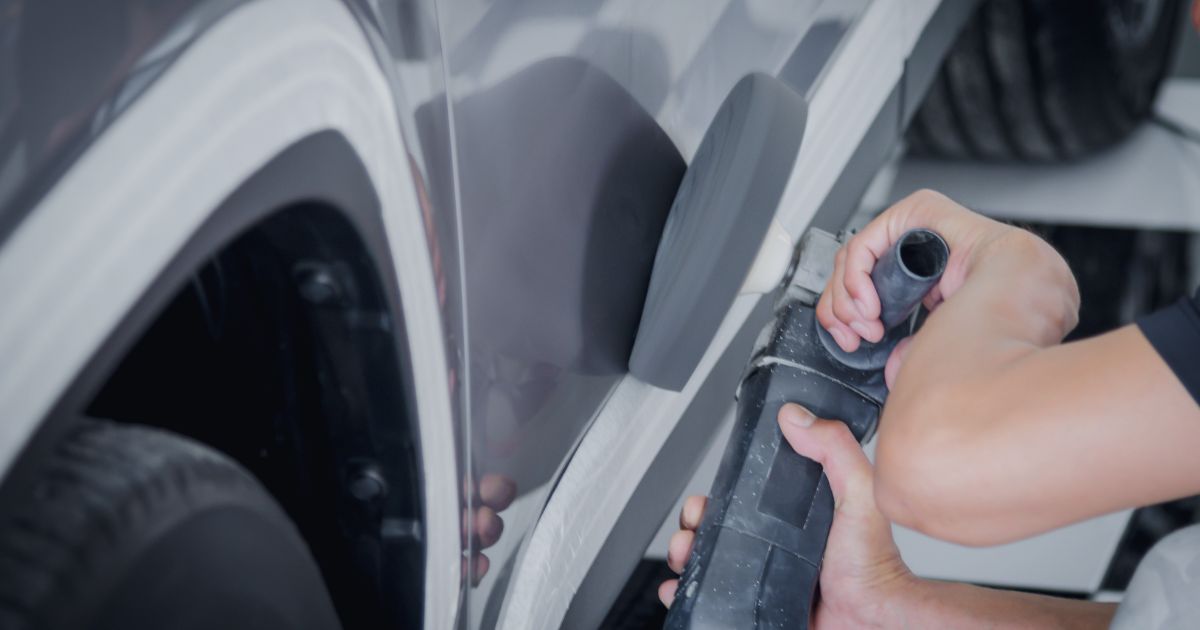The Most Common Mistakes in Bodywork Repairs

The Most Common Mistakes in Bodywork Repairs
Bodywork repairs are an essential part of maintaining a car in good condition, both aesthetically and functionally. Unfortunately, mistakes made during repairs can not only lower the quality of the work but also lead to additional costs and technical issues. In this article, we discuss the most common mistakes in bodywork repairs, their causes, and how to avoid them. We'll also highlight the product range available at EASY PARTS, which can help achieve precise and durable repairs.
Part I: Incomplete Rust Removal – A Recurring Problem
Why is this a mistake?
One of the most common mistakes is failing to thoroughly remove rust before starting bodywork repairs. Rust left beneath layers of paint or filler can quickly spread, damaging the repaired area and surrounding body panels.
Examples of consequences:
Blisters forming under the paint, indicating advancing corrosion.
Weakening of the metal structure, leading to repeated repairs or the need to replace larger sections of the bodywork.
How to avoid this mistake:
Thorough rust removal:
Use appropriate tools like wire brushes, grinders, or specialized rust removal products.Protect the area after rust removal:
Apply an anti-corrosion agent before painting to prevent further rust development.Choose the right materials:
Opt for repair panels from EASY PARTS made from galvanized steel for enhanced corrosion resistance.
Part II: Using Low-Quality Materials – A Costly Economy
Why is this a mistake?
Using cheap, low-quality materials such as filler, paint, or sheet metal can result in unsightly and short-lived repairs. This decreases the car's value and often necessitates rework in a short time.
Examples of consequences:
Cracking or peeling of the filler.
Poorly fitting body panels, leading to uneven surfaces and visible seams.
Lack of weather resistance, causing rust to appear sooner.
How to avoid this mistake:
Invest in high-quality materials:
Products from EASY PARTS, such as steel repair panels, are precisely tailored to vehicle models and offer high durability.Check specifications:
Ensure the materials used meet the vehicle manufacturer's requirements.Don’t cut corners:
While cheap materials may seem appealing, their low quality can lead to higher costs in the future.
Part III: Inadequate Surface Preparation for Painting
Why is this a mistake?
A poorly prepared surface can result in poor paint adhesion. This leads to unsightly finishes, such as streaks, bubbles, or uneven gloss.
Examples of consequences:
The need for repeated painting, increasing costs and repair time.
Reduced vehicle aesthetics, potentially lowering its market value.
How to avoid this mistake:
Thorough surface cleaning:
Remove all contaminants, such as grease, dust, or rust residues, before applying primer.Sanding and smoothing:
Level the surface using sandpaper of the appropriate grit to achieve a perfectly smooth base for painting.Apply primer:
Use a high-quality primer to ensure better paint adhesion and enhance the durability of the finish.
Part IV: Improper Installation of Repair Panels and Bodywork Components
Why is this a mistake?
Incorrectly installed repair panels or poorly fitting body components can result in an unappealing look, difficulties in assembling other parts, or even functional issues with the vehicle.
Examples of consequences:
Visible gaps and unevenness at the installation site.
Problems with opening doors or the trunk lid.
Reduced market value of the vehicle due to noticeable imperfections.
How to avoid this mistake:
Ensure precise fitting of components:
Verify that repair panels match the vehicle's model and year. EASY PARTS products are designed for precise fitting, reducing the risk of errors.Use the right tools:
Employ bodywork tools like shaping hammers, clamps, and gap measuring devices to achieve a perfect fit.Test-fit before assembly:
Check how the part aligns with the bodywork before performing the final installation to prevent later issues.
Part V: Skipping Protective Coatings Before Final Finishing
Why is this a mistake?
Failing to apply anti-corrosion protection before painting or assembling components is a common mistake. This can lead to rust developing even on newly installed parts. Even high-quality repair panels, such as those from EASY PARTS, require proper protection.
Examples of consequences:
Rust forming beneath the paint, damaging the structure of the repaired part.
Faster wear of repaired bodywork, requiring additional intervention.
How to avoid this mistake:
Apply an anti-corrosion coating:
Use specialized paint or anti-corrosion wax on all repaired parts before applying the final paint layer.Protect hard-to-reach areas:
Shield inner parts of the repair panels, such as surfaces in contact with the chassis, which are especially prone to rust.Choose galvanized panels:
EASY PARTS offers galvanized steel panels that are more resistant to rust right from the manufacturing stage.
Part VI: Mismatched Paint – An Aesthetic Issue
Why is this a mistake?
Using paint that doesn’t match the rest of the body can make the repaired area stand out. This reduces the aesthetic and market value of the car, even if the repair itself was performed correctly.
Examples of consequences:
Visible differences in color or finish.
The need to repaint the entire panel, increasing costs.
How to avoid this mistake:
Choose a professional painter:
Trust experts experienced in matching paint using the manufacturer’s color code.Test paint samples:
Before painting the whole panel, test a small area to ensure the shade matches perfectly.Use the right tools:
Professional spray guns and high-quality paints ensure a uniform and long-lasting finish.
Conclusion
Bodywork repairs are a complex process where mistakes can easily occur, especially if proven practices and high-quality materials are not used. Common mistakes, such as incomplete rust removal, low-quality materials, improper panel fitting, or skipping anti-corrosion protection, can significantly reduce the quality of the repair and generate additional costs.
Products available at EASY PARTS, such as galvanized steel repair panels, can help avoid many of these issues. With their precise fit and high-quality construction, repairs can be performed more accurately and durably. Remember, investing in the right materials and tools is key to effective bodywork repairs.